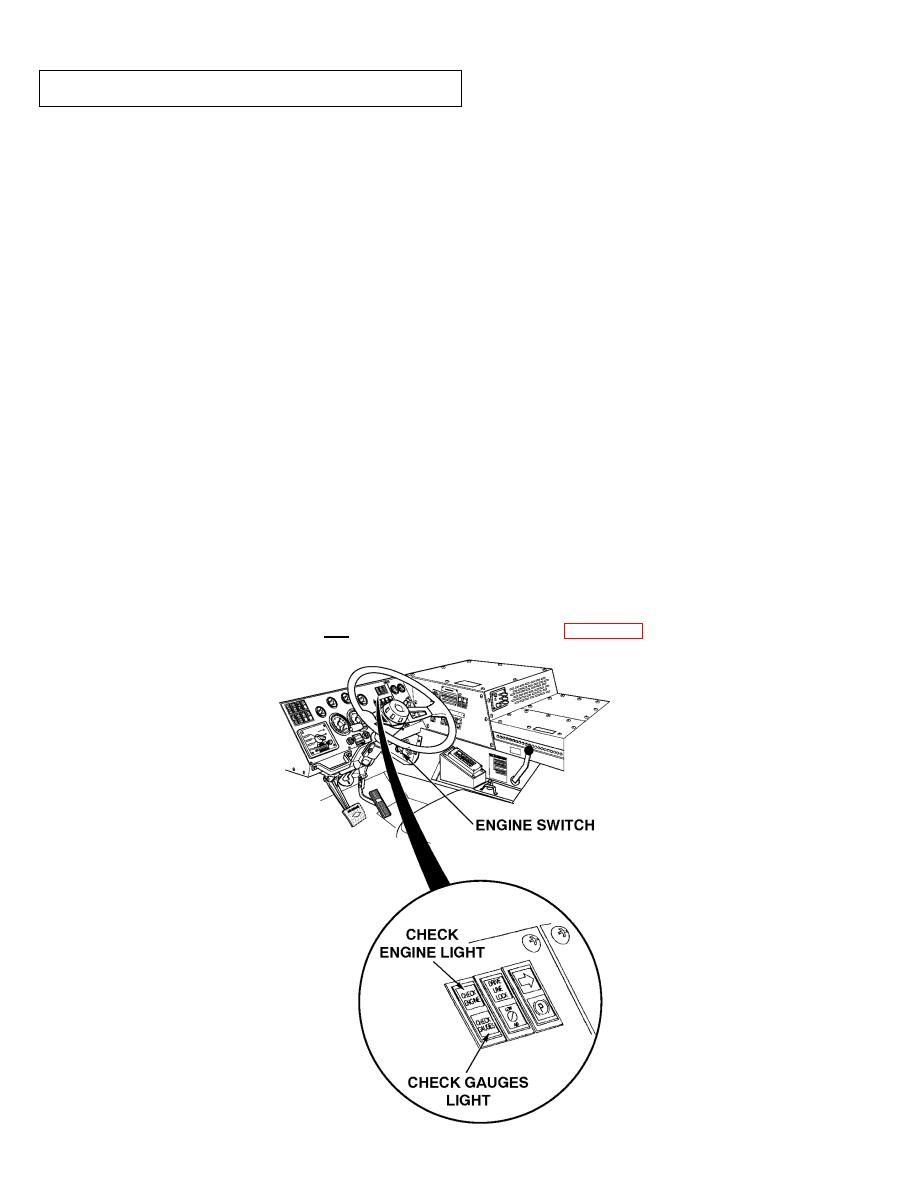 |
|||
|
|
|||
|
|
|||
| ||||||||||
|
|
 TM 9-2320-364-20-1
2-14. DDEC III/IV TROUBLESHOOTING (CONT).
Section II. BASIC KNOWLEDGE REQUIRED (Cont.)
E. GENERAL DIAGNOSTIC INFORMATION
As a bulb and system check, the "Check Engine" and "Check Gauges" lights will come on for 5 seconds when the ignition
switch is first turned on.
If the "Check Engine" light comes on during vehicle operation, this indicates the self diagnostic system has detected a fault.
When the diagnostic request switch is held, the diagnostic system will flash the orange lights located on the vehicle's dash.
The light will be flashing the code(s) indicating the problem area(s). If the "Check Gauges" light comes on during vehicle op-
eration, this indicates the DDEC System has detected a potential engine damaging condition. The engine should be shutdown
immediately and have the engine checked for the problem.
*Active codes will be flashed on the "Check Gauges" light in order from most recent to least recent occurrence based on engine
hours. If there are no active codes, a code 25 will be flashed.
*Inactive codes will be flashed on the "Check Engine" light in order from most recent to least recent occurrence based on
engine hours. If there are no inactive codes, a code 25 will be flashed.
* FLASHING CODES SHOULD BE DONE WITH THE ENGINE NOT RUNNING AND IGNITION ON. *
A diagnostic code indicates a problem in a given circuit (i.e., diagnostic Code 14 indicates a problem in the oil or coolant tem-
perature sensor circuit. This includes the oil or coolant temperature sensor, connector, harness, and Electronic Control Mod-
ule (ECM). The procedure for finding the problem can be found in Diagnosis Chart Code 14. Similar charts are provided for
each code. Remember, diagnosis should always begin at the starting chart (START). For an oil or coolant temperature sensor
problem, it will quickly lead you to Chart 14 -- but first it gets you to verify the code/symptom.
Since the self-diagnostics do not detect all possible faults, the absence of a code does not mean there are not problems in the
system. If a DDEC III/lV problem is suspected, even in the absence of a code, go to START anyway. This chart can lead you to
other charts which can aid in the troubleshooting process -- where DDEC III/lV problems may occur but do not generate a code.
Basic mechanical checks, however, are not covered in this guide, refer to Chapter 2, Vehicle Troubleshooting.
|
|
Privacy Statement - Press Release - Copyright Information. - Contact Us |